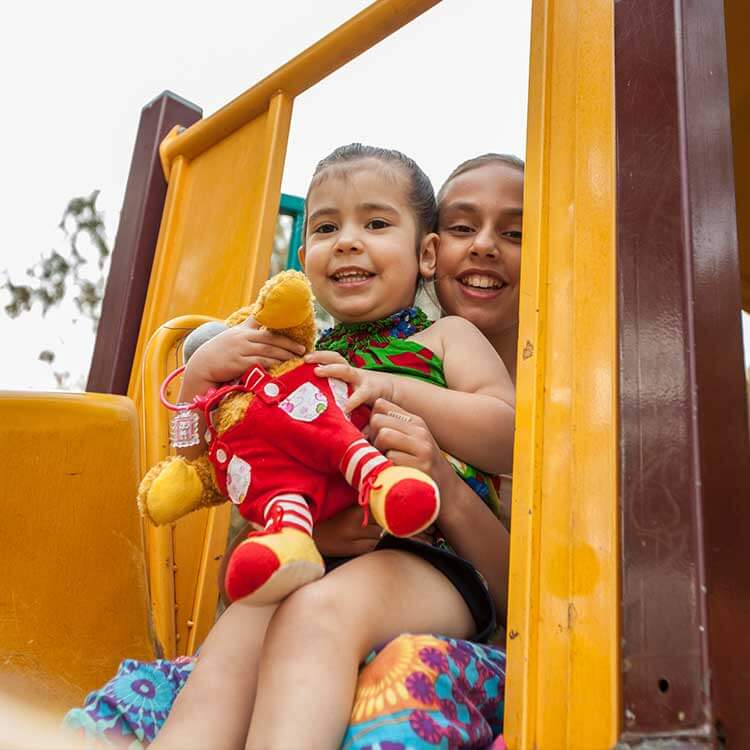Search
Research
Emerging issues in the Pacific BasinThis review provides a snapshot of some key environmental health issues that will provide ongoing challenges for the Pacific Basin region in the coming decades
Research
No role for neutrophil elastase in influenza-induced cellular recruitment, cytokine production or airway hyperresponsiveness in micePrevious studies have suggested that in vitro modulation of neutrophil chemokines and inflammatory cytokines by neutrophil elastase (NE) does not translate to t

News & Events
Directing immune development to curb sky-rocketing diseaseOnce upon a time it was infectious diseases like polio, measles or tuberculosis that most worried parents. With these threats now largely under control, parents face a new challenge – sky-rocketing rates of non-infectious diseases such as asthma, allergies and autism.

News & Events
Australian researchers join international project to curb unhealthy lifetime trajectoriesAustralian researchers join global effort to better understand how events during pregnancy and childhood influence the development of disease later in life.
Research
Association of prenatal alcohol exposure with offspring DNA methylation in mammals: a systematic review of the evidencePrenatal alcohol exposure is associated with a range of adverse offspring neurodevelopmental outcomes. Several studies suggest that PAE modifies DNA methylation in offspring cells and tissues, providing evidence for a potential mechanistic link to Fetal Alcohol Spectrum Disorder.
Research
Switching from tobacco cigarettes in very early pregnancy: The effects of in utero e-cigarette exposure on mouse offspring neurodevelopment and behaviourElectronic cigarettes (e-cigarettes) are often perceived to be safer than smoking, which has led to some women switching to e-cigarettes during pregnancy. However, the effects of switching from smoking to e-cigarettes on both pregnancy outcomes and the foetus are largely unknown. This study aimed to investigate the effects of switching from tobacco smoking to e-cigarette use in very early pregnancy on birth outcomes, neurodevelopment and behaviour of the offspring.
Research
What doctors should consider before prescribing e-liquids for e-cigarettesAlexander Larcombe BScEnv (Hons) PhD Honorary Research Fellow Honorary Research Fellow Associate Professor Alexander Larcombe began work at The Kids
Research
The Use of Alcohol Pharmacotherapies and Prescription Contraceptives among Females of Reproductive Age in AustraliaThere is no clear clinical guidance on the use of alcohol pharmacotherapies in pregnancy due to insufficient safety information. Contraception should therefore be considered for reproductive-aged females receiving alcohol pharmacotherapies not wishing to become pregnant. This study evaluated the concurrent use of alcohol pharmacotherapies with prescription contraception and other medications in Australian females of reproductive age compared to those not receiving an alcohol pharmacotherapy.
Research
Intrauterine growth restriction promotes hypothalamic circadian dysregulation in adult mouse offspringAdverse prenatal conditions can induce intrauterine growth restriction and increase the risk of adulthood metabolic disease. Mechanisms underlying developmentally programmed metabolic disease remain unclear but may involve disrupted postnatal circadian rhythms and kisspeptin signalling.
Research
Inclusion of genital, sexual, and gender diversity in human reproductive teaching: impact on student experience and recommendations for tertiary educatorsWestern societal norms have long been constrained by binary and exclusionary perspectives on matters such as infertility, contraception, sexual health, sexuality, and gender. These viewpoints have shaped research and knowledge frameworks for decades and led to an inaccurate and incomplete reproductive biology curriculum. To combat these deficiencies in reproductive systems-related education, our teaching team undertook a gradual transformation of unit content from 2018 to 2023, aiming to better reflect real diversity in human reproductive biology.
